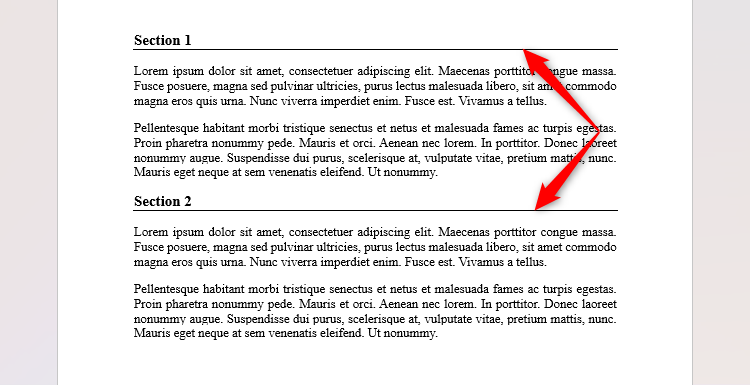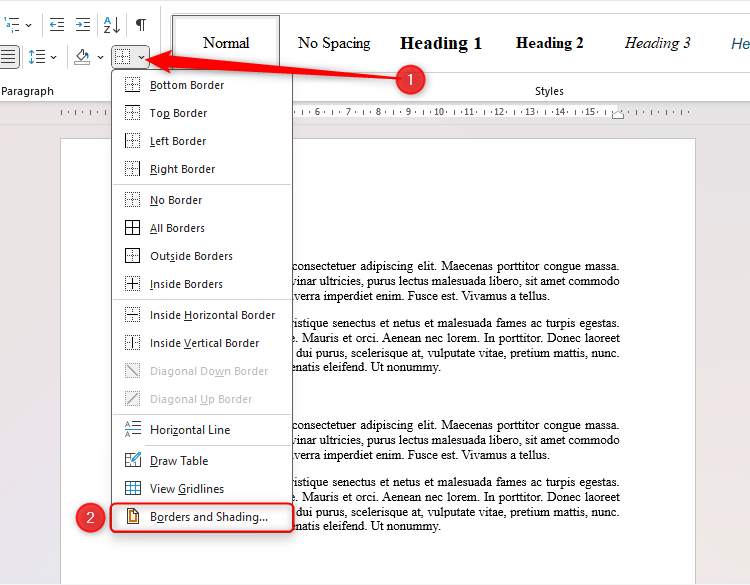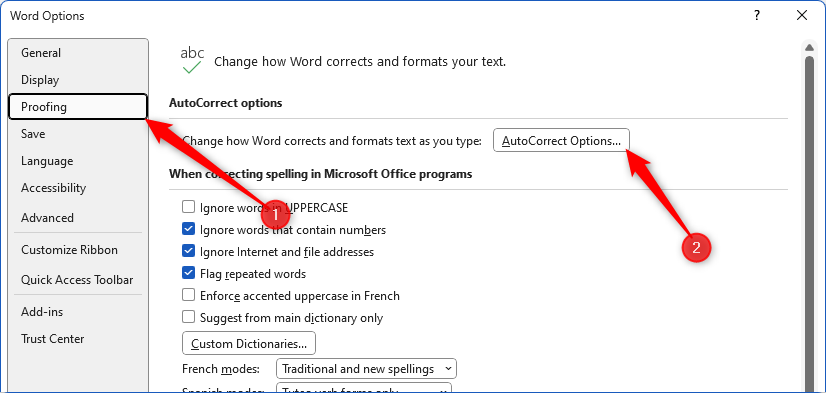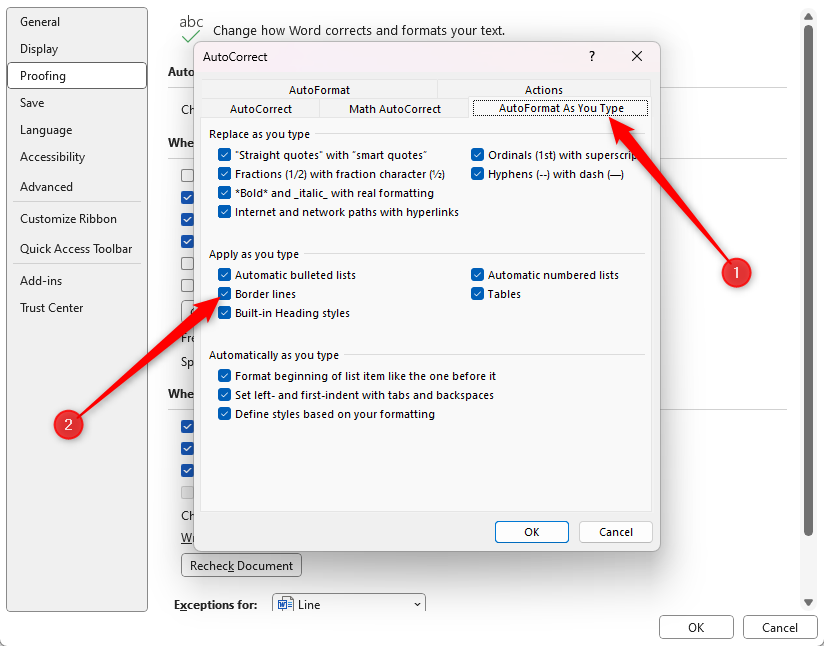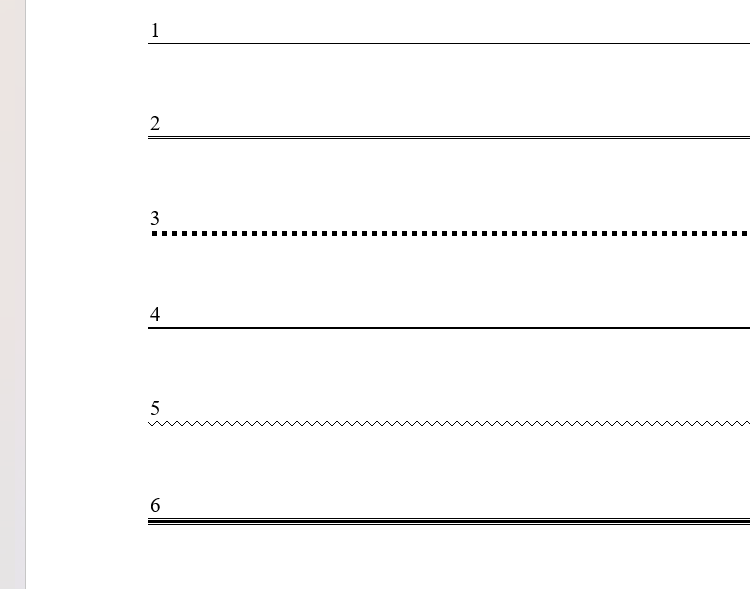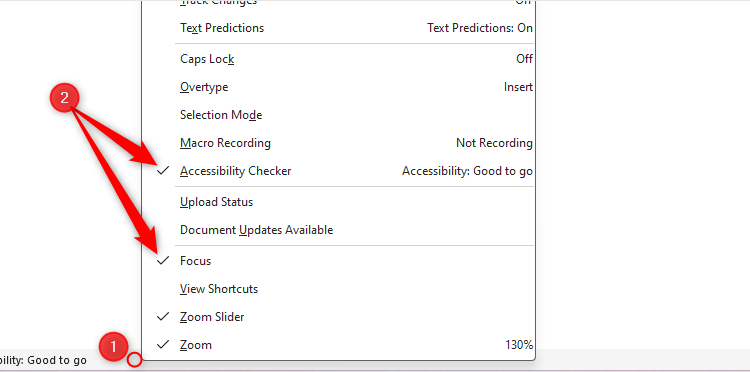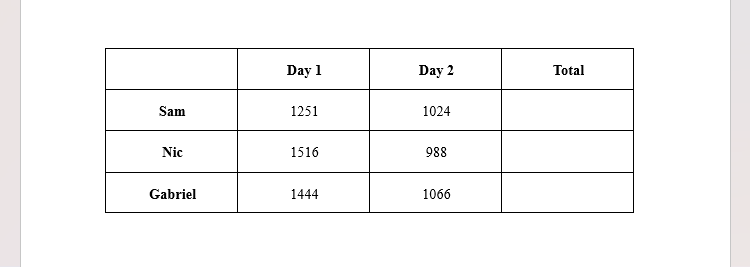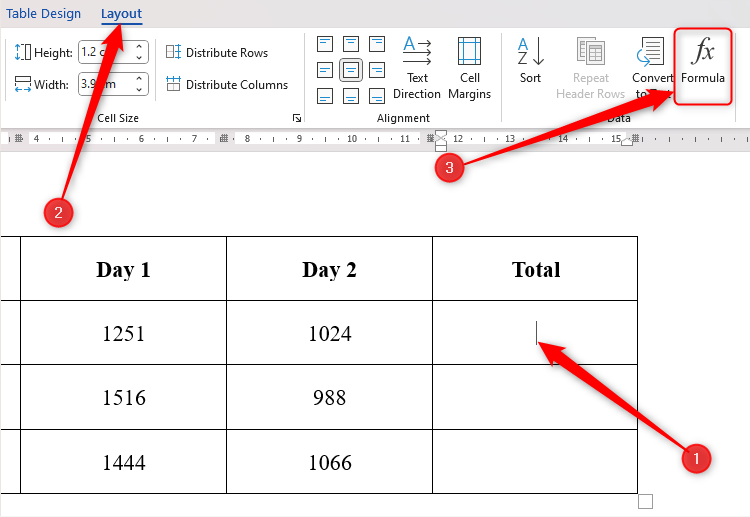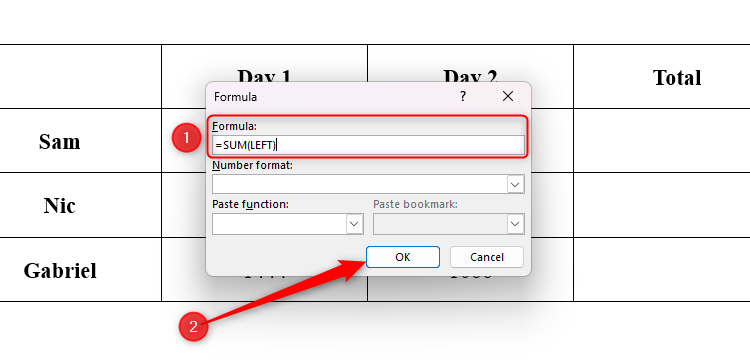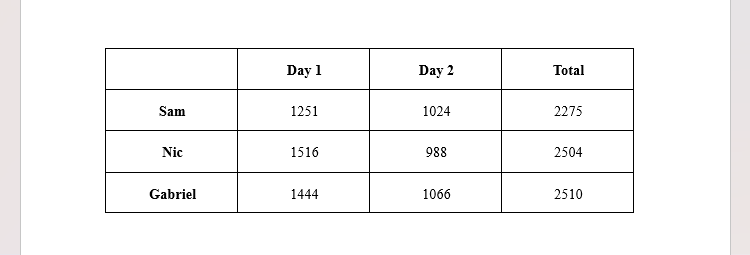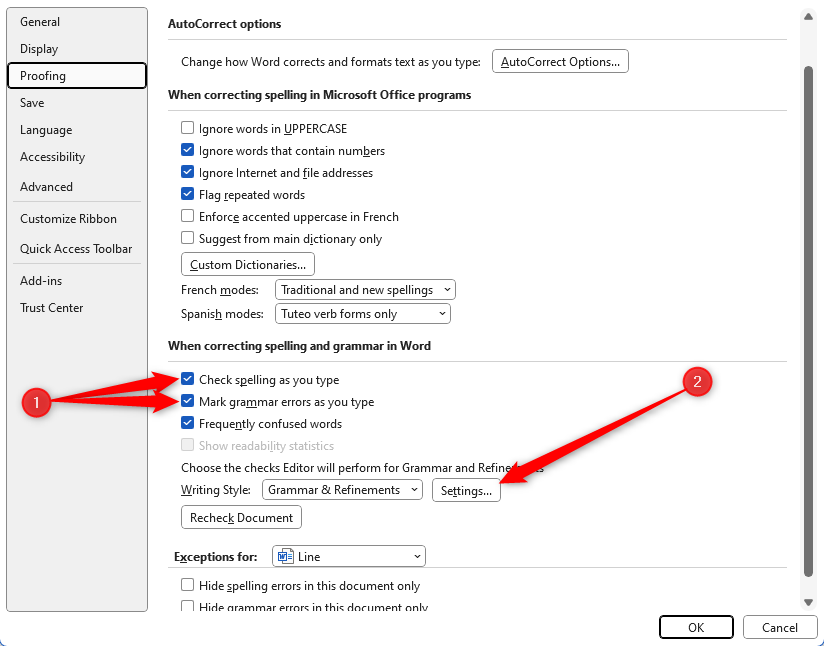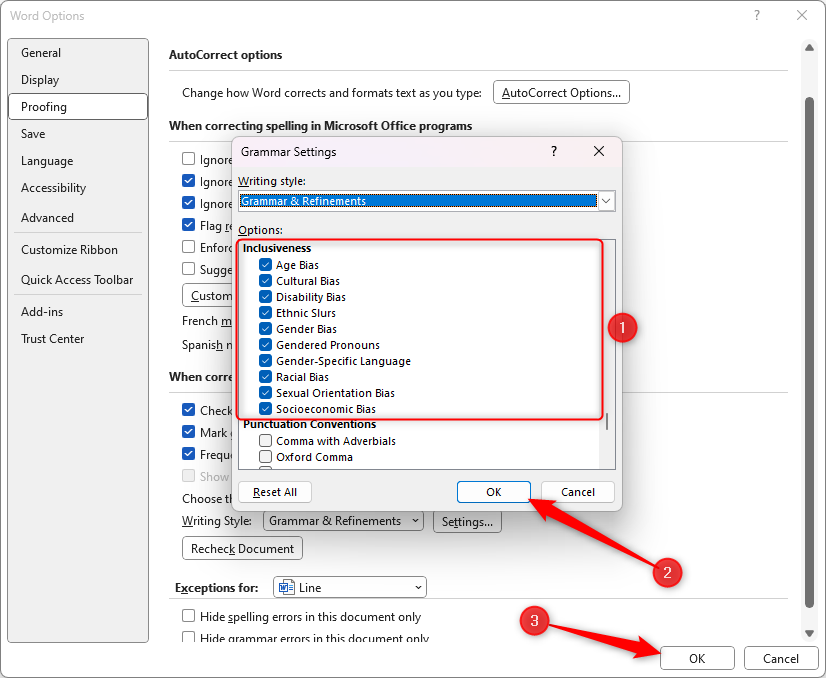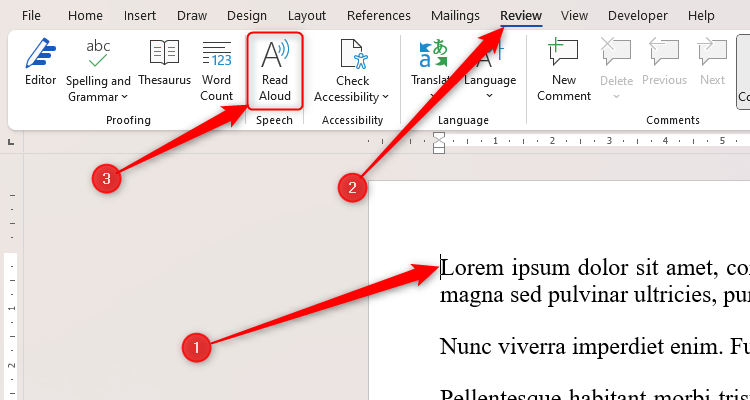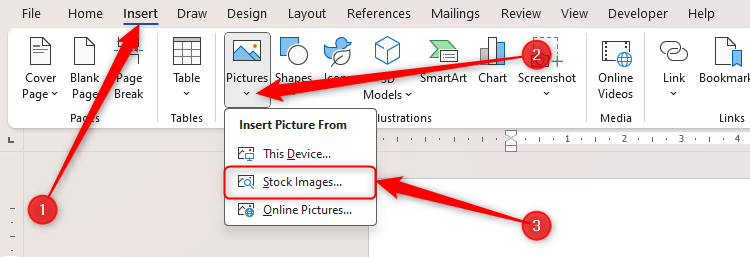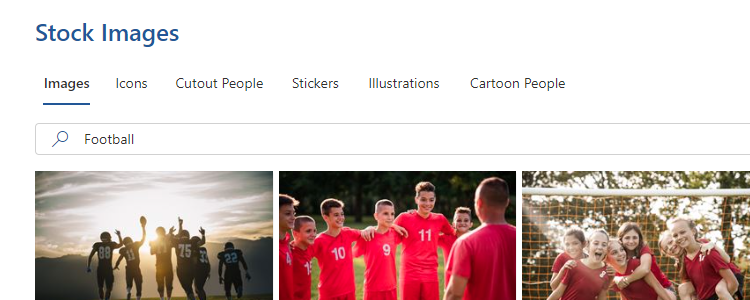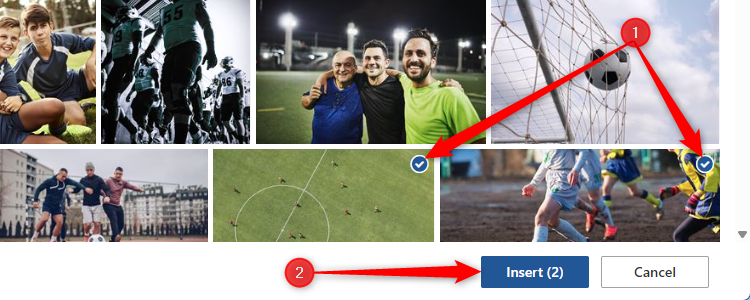I discovered many of Microsoft’s quick tricks either by mistake or by clicking through the menus and testing everything out. To save you from having to do this, here are some of the best tricks I’ve found over the years and still use today.
Because Word for the web is a slimline version of the desktop app, the tips in this article relate to the Microsoft Word desktop app.
Create Horizontal Border Lines in an Instant
Horizontal border lines are useful in any document, as they help you clearly partition different sections of your work..
While you can format border lines by clicking “Borders And Shading” via the Borders icon in the Home tab, the many options you face may lead to border style and thickness inconsistencies, and using this option takes several clicks.
Instead, you can use a simple keyboard shortcut to achieve the same outcome.
First, you need to ensure that border lines are set to appear automatically upon your insertion of the relevant prompt. To do this, click File > Options, and select “Proofing” in the Word Options Window. From there, click “AutoCorrect Options.”
Open the “Format As You Type” tab to check that “Border Lines” is checked.
Then, click “OK” to close the dialog boxes, and you’re ready to go.
Border lines are linked to the text directly above them. So, after typing your line of text, press Enter, and then use the following shortcuts.
Ensure you don’t add spaces between each character when using the following keyboard shortcuts. When you’ve finished typing the shortcut, press Enter to see the line appear.
- Type — (three hyphens) for a single, narrow line.
- Type === (three equals signs) for a double line.
- Type *** (three asterisks) for a broken line.
- Type _ _ _ (three underscores) for a bold line.
- Type ~~~ (three tilde symbols) for a wavy line. This only works on the Word desktop app, not Word for the web.
- Type ### (three hashtags) for a triple line with a thick center. This only works on the Word desktop app, not Word for the web.
To remove the border lines, place your cursor in the text above the relevant line, click the Borders drop-down in the Home tab on the ribbon, and click “No Border.”
Customize the Status Bar
The Status Bar is a somewhat undervalued part of the Microsoft Word user interface. It helps you with navigation—especially useful if you have multiple pages and sections within your document—and outlines other important details, such as the set language, word count, and accessibility of your Word document. This means you can keep an eye on the things that might otherwise go unnoticed but actually matter greatly as you progress through your work.
To customize what you see here, right-click anywhere along the Status Bar and check or uncheck the available options .
Along with the Zoom and Zoom slider, which are in the Status Bar as default views, I would recommend displaying the following:
- Language—Word is notoriously poor at sticking to your chosen language, especially if you use a word borrowed from another tongue. Having the Language option enabled in the Status Bar means you can routinely glance to check that your work is being proofed in the correct language.
- Accessibility—It’s surprising that Word lets you choose whether or not to have this activated, given its everyday usefulness. This tool checks whether your work will cause problems for individuals with certain disabilities when they read it on screen or when printed.
- Focus—Focus mode is a must-have for those of you who are easily distracted. It allows you to remove all the clutter from your screen, so you can concentrate on your work without any distractions. Having this at a single click of a mouse is essential for efficiency and productivity.
- Spelling And Grammar Check—While you can’t always rely on Word to correctly identify errors, always having the SPAG check in the bottom corner is useful if you want to quickly see whether you might need to address something. You’ll see the icon with a checkmark if Word thinks your work is mistake-free, or a cross if it spots something worth reviewing.
- Section, Page Number, Line Number, Word Count, and Character Count—Whether you’re writing a cover letter for a job, a doctoral thesis for your university PhD, or an article for an online tech magazine, you’re likely to have some sort of length limitation imposed on your work. So, having these details ever-present in the corner of your screen means you can keep an eye on your limitations as you type.
Calculate in a Word Table
Most people see Word as a word processing program and Excel as a data management program. What they don’t know, however, is that Word can perform calculations without any need for Excel.
First, type your figures into a Word table, leaving the Total rows and columns blank.
Then, with your cursor in the first Total cell, open the “Layout” tab (when you create a table, you’ll see two Layout tabs—open the one on the right), and click “Formula.”
You can then update the details in the Formula field with the following syntax:
=FORMULA(POSITION)
where Formula is the calculation you want Word to perform, similar to those in Excel, and Position is the direction you want Word to look to perform the calculation. In my example, I want to tally each person’s total in the final column, so I’ll use the formula shown in the screenshot below, and click “OK.”
You can then copy and paste the contents of this cell to the other Total cells, before highlighting the values and pressing F9 to update the calculations.
Unlike in Excel, which automatically incorporates value changes in calculations, you will need to tell Word to update the calculation if your data changes. To do this, select the relevant cells, and press F9.
Check for Non-Inclusive Language
Would you have known “craftsmanship” is a non-inclusive term? How about the phrases “elderly people” or “suffering from diabetes?” In today’s ever-evolving era of inclusivity and increased consideration of people’s individuality and feelings, terms you might not have thought twice about typing could actually be offensive. But don’t worry—Microsoft Word has you covered.
Click File > Options, and click “Proofing.” First, ensure “Check Spelling As You Type” and “Mark Grammar Errors As You Type” are checked. Then, click “Settings” next to Writing Style.
Here, you’ll see a long list of writing issues that Word can flag up if you wish. Locate the Inclusiveness section, and check each type of non-inclusive language that you want Word to identify. When you’re done, click “OK” to close the dialog boxes.
Word will now use a blue line to highlight these non-inclusive terms, and you can click on that word to see some more inclusive alternatives.
Get Word to Read Your Text Aloud
Picture this—you’ve spent six hours staring at your screen and typing into Microsoft Word. You’ve just finished your first draft, but you need to proofread your work. But your wrists ache, and your eyes hurt. Sitting there for another few hours and re-reading your work is the last thing you want to do right now, but the submission deadline is tomorrow, and you have no option.
Actually, you do have an option. Word can read your work for you. Not only does this mean you can sit back in your chair and close your eyes while you listen, but hearing the text being read back to you can highlight new issues that you mightn’t have spotted if you had read it yourself.
To do this, place your cursor where you want the reading to begin (or press Ctrl+Home to go to the start of your document), and click “Read Aloud” in the Review tab on the ribbon.
Word will start to read the work aloud straight away. You can stop, pause, rewind, or fast-forward the playback using the controls that appear on your screen—or, better still, use the following keyboard shortcuts:
- Start (or stop) Read Aloud—Ctrl+Alt+Space
- Pause (or play) Read Aloud—Ctrl+Space
- Speed up—Alt+Right
- Slow down—Alt+Left
- Read the previous paragraph—Ctrl+Right
- Read the next paragraph—Ctrl+Left
Use Stock Images for High Quality
Using poor-quality images is probably the quickest way to ruin your work’s presentation and lower your authenticity. This is why you should opt for Microsoft’s high-quality stock images. Doing so will also mean you can avoid wasting time browsing the web, and what’s more, according to the APA style guide, you can use Word’s stock images without citations, with Microsoft itself stating that they are royalty free.
In the Insert tab on the ribbon, click “Pictures.” Then, click “Stock Images.”
You can then insert a keyword to search for a particular type of picture, or browse the many categories on display.
Once you’ve selected your image or images, click “Insert.”
You can then reformat, reposition, or even add a caption to your chosen images.
Along with using these little-known tips, you can also optimize your Microsoft Word use by making sure you set up your document before you get started.


